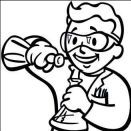
Intro
Primary Sources
Wikipedia and Google Guide
Final Note
Intro
Hardcore
Graphs
Citations
Sample
Intro
General Tips
Simple
Heavy
 |
Research: Intro Primary Sources Wikipedia and Google Guide Final Note |
Paper: Intro Hardcore Graphs Citations Sample |
Presentation: Intro General Tips Simple Heavy |
| Failure Adelphi Contact us |